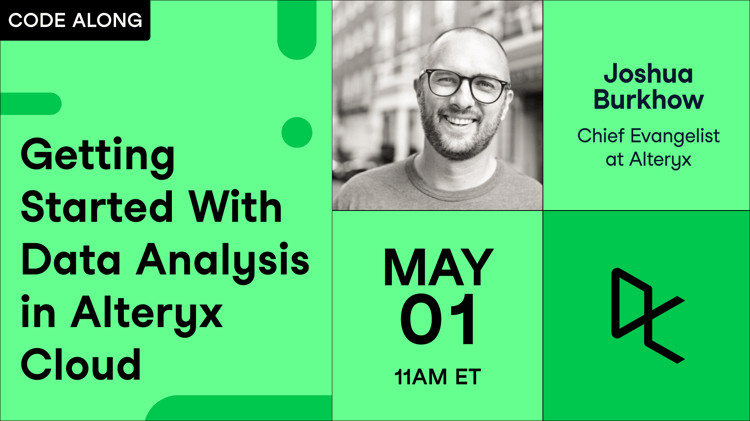Track
So, you've heard about Alteryx and how it can help with automating your data workflows. But what does it really do, and how can it benefit you?
In this guide, we'll introduce you to Alteryx and give you a better understanding of its capabilities.
Read on for a simple guide on what Alteryx is and be sure to check out our Alteryx Fundamentals skill track to get hands-on experience to master Alteryx Designer and pass the Alteryx Core Certification exam.
Learn Alteryx From Scratch
Start now and build job-ready analytics skills via Alteryx.
What is Alteryx?
Alteryx is a data analytics and visualization platform that offers a wide range of tools to help businesses make sense of their data. It allows users to easily clean, transform, and analyze large datasets from different sources without needing coding or programming expertise.
For simple tutorials on big data and handling large datasets, check out our Big Data Tutorials.
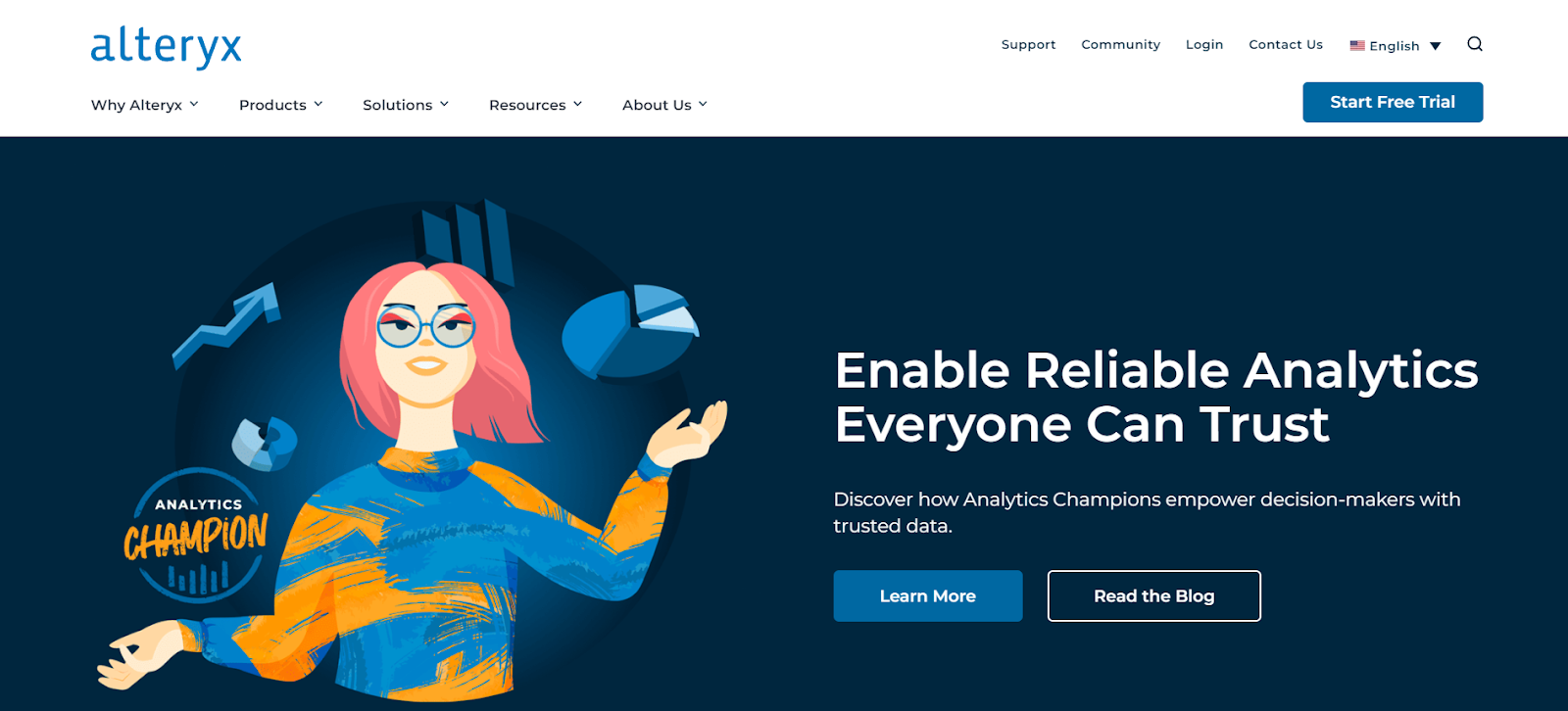
Alteryx data analytics platform - source
With Alteryx, users can perform complex tasks such as predictive modeling, geospatial analysis, and advanced reporting in a user-friendly interface. It can also automate workflows, saving time and effort for users.
Some of its key functions include:
- Data blending: combining data from multiple sources
- Predictive analytics: using machine learning algorithms to make predictions
- Reporting and visualization: creating interactive dashboards and reports
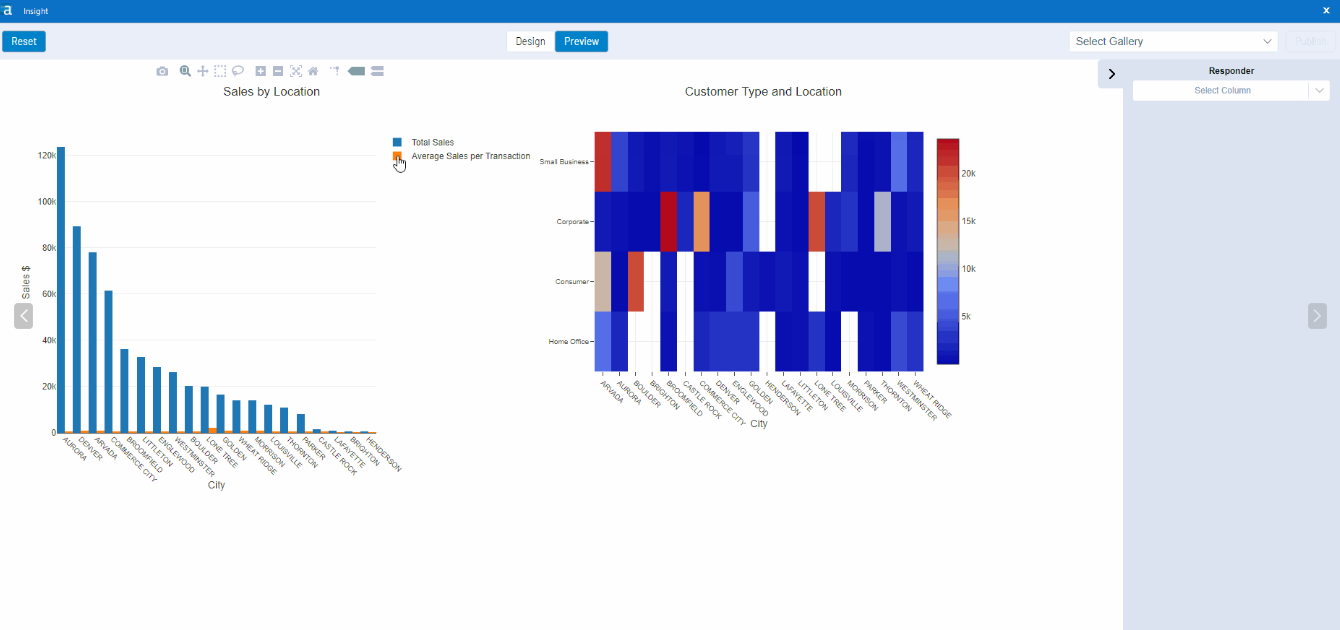
Alteryx dashboard example - source
This makes Alteryx a powerful tool for businesses looking to gain insights and make data-driven decisions.
For a complete introduction to predictive analytics, check out our Introduction to Predictive Analytics in Python course.
How does Alteryx work?
Alteryx follows a drag-and-drop design, making it easy for users to create their own workflows. Users can simply select the tools they need and connect them together in a logical flow to perform different tasks.
As we explore in our Introduction to Alteryx course, the platform also uses an intuitive visual language called Alteryx Designer that simplifies data preparation and analysis. It allows users to easily input, manipulate, and output data without the need for coding or, at least, with low code.
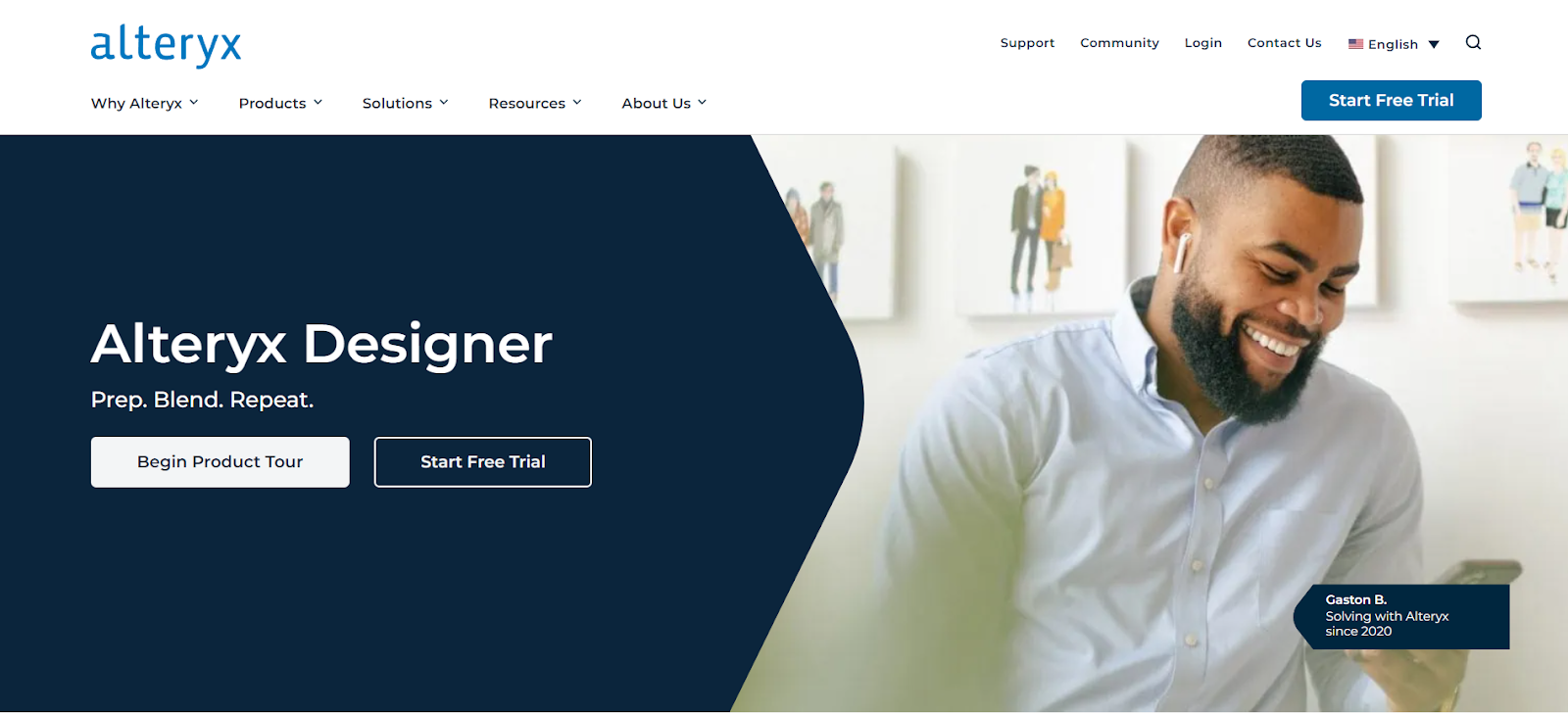
Alteryx Designer tool - source
Moreover, Alteryx offers a wide range of tools and connectors designed to work with different types of data sources, such as Excel spreadsheets, databases, and social media platforms.
Core Features of Alteryx
1. Data analytics automation
One of the core features of Alteryx is its ability to automate data analytics workflows. This means that users can schedule and run their workflows automatically without any manual intervention. This not only saves time but also reduces errors and increases efficiency.
In comparison with SQL, Alteryx offers a more visual and intuitive approach to automating data workflows. This allows users to focus on the analysis rather than getting bogged down with technical details.
For example, the Iterative Macro feature in Alteryx Designer allows users to automate repetitive tasks by looping through a set of inputs until a desired outcome is achieved.
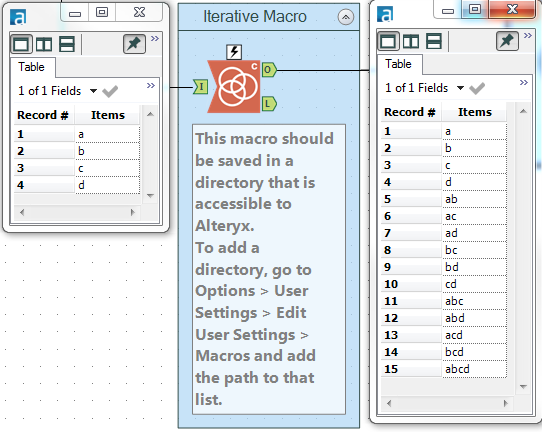
Iterative Macro feature in Alteryx - source
Let's also compare this with another popular data preparation tool—Excel.
While Excel is widely used for data manipulation and analysis, it can be limiting when working with data that requires repetitive cleaning.
Although Excel macros and VBA can provide some automation, it's harder to accomplish this on a large scale. Alteryx has a feature called Batch Macro that can be used to address this issue of performing automation on a larger scale.
Looking to also learn more about Excel? Our Excel Fundamentals course would be perfect for you!
2. Data preparation capabilities
Alteryx shines in its ability to simplify and automate data collection and preparation from various sources.
It supports a plethora of 300+ data connectors, including but not limited to:
- Databases like SQL Server, Oracle, and MySQL
- Spreadsheet software like Excel
- Data visualization tools like Tableau
- Social media platforms like Facebook and Twitter
- Cloud services like Amazon Web Services (AWS) and Google Cloud Platform
Users can leverage these data connectors to extract data from various sources automatically.
Once the data is collected, Alteryx provides a friendly user interface to clean and prepare the data for analysis. This involves common tasks such as filtering rows, selecting columns, changing data types, replacing missing values, and pivoting or unpivoting data.
The exceptional part is that all these tasks can be conducted using a simple drag-and-drop mechanism, which means users don't need to write any code.
Moreover, the process can be automated by building workflows that can be reused and shared, eliminating the need for repetitive manual work. This combination of features distinguishes Alteryx as a robust tool for data collection and preparation.
Thinking of learning an alternative to Alteryx, like SQL Server or Tableau? You’ll love our Introduction to SQL Server and Introduction to Tableau courses.
3. Automated workflows
Automating recurring business processes is another area where Alteryx truly excels. The platform provides the ability to create workflows that perform repetitive tasks automatically, freeing up users' time for other important activities.
For instance, a user might need to perform a monthly analysis of sales data or a weekly update of customer information. With Alteryx, these tasks can be automated so that the user doesn't have to manually repeat the process each time.
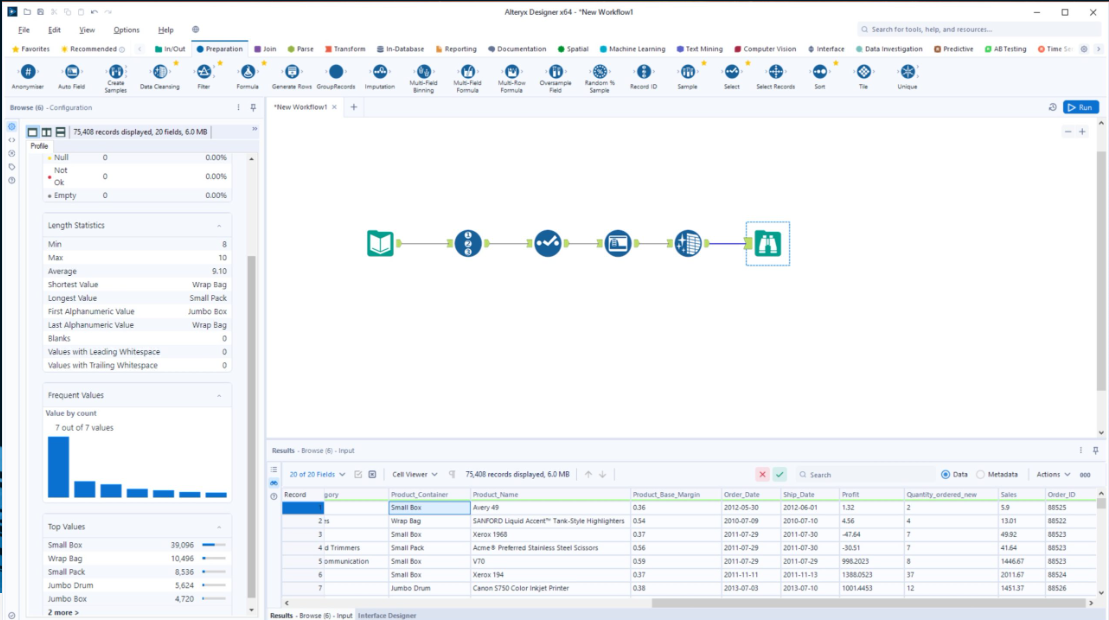
Alteryx workflows -source
To automate a workflow, users can use the Schedule function in Alteryx. With this function, users can set their workflows to run at specified times or intervals, such as daily, weekly, or monthly.
It also allows for workflows to be triggered by certain events or conditions. This way, data is always up-to-date and ready for analysis when needed.
In addition to time savings, automating processes with Alteryx can also lead to considerable improvements in accuracy and consistency. By reducing the need for manual data entry or manipulation, the potential for human error is significantly diminished.
This means that businesses can rely on their data to be more accurate and consistent, leading to more reliable insights and better decision-making.
4. Predictive modeling
Alteryx offers advanced capabilities in predictive modeling through its integrated machine learning algorithms and AutoML.
Built-in statistical models like linear regression, logistic regression, and decision trees help in predictive modeling.
With Alteryx's Predictive Analytics tools, users can forecast trends, estimate possible outcomes, and make informed decisions.
For instance, in the retail industry, predictive modeling could help anticipate customer buying behavior, resulting in more effective marketing strategies. In finance, predictive models can assist in forecasting stock prices or identifying potential risks.
Alteryx's predictive modeling goes a step further by providing model validation tools, like the Cross-Validation Tool. These tools allow users to evaluate the accuracy and reliability of their predictive models, ensuring the predictions generated are statistically sound.
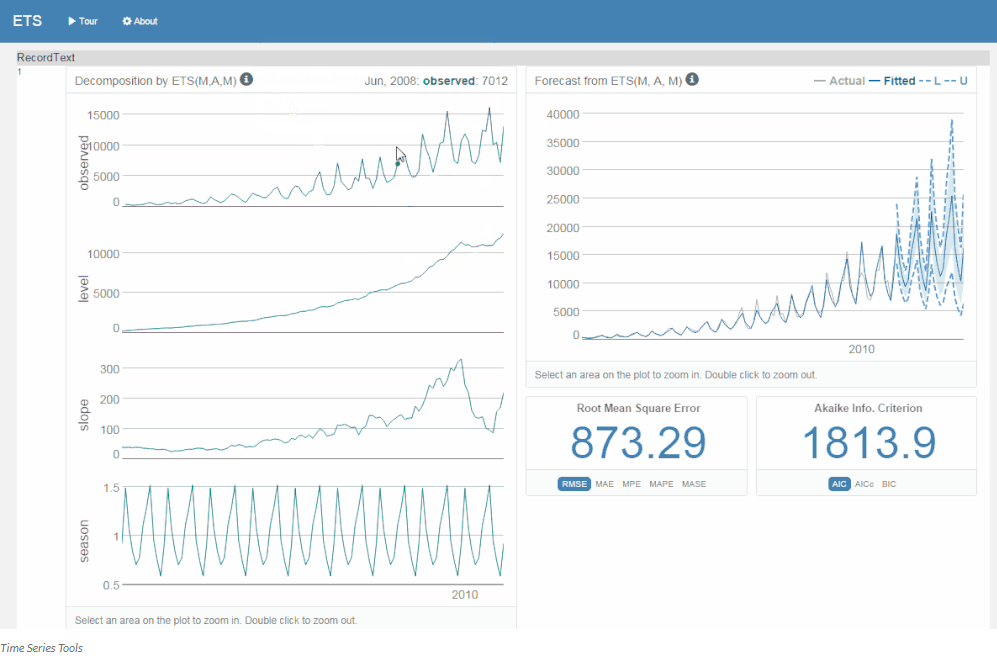
Model performance metrics dashboard - source
Moreover, the easy-to-understand visualizations provided by Alteryx help communicate complex predictive models to stakeholders in a more digestible format.
To learn more about data visualization, you might want to have a look at our Understanding Data Visualization course.
5. Geospatial analysis
Typical geospatial analysis software like QGIS or ArcGIS often requires specialized skills and extensive training to use effectively.
However, Alteryx's intuitive interface makes it easy for users of all levels to perform powerful geospatial analysis quickly. The platform offers a wide range of spatial tools that can be used to visualize and analyze location data from various sources.
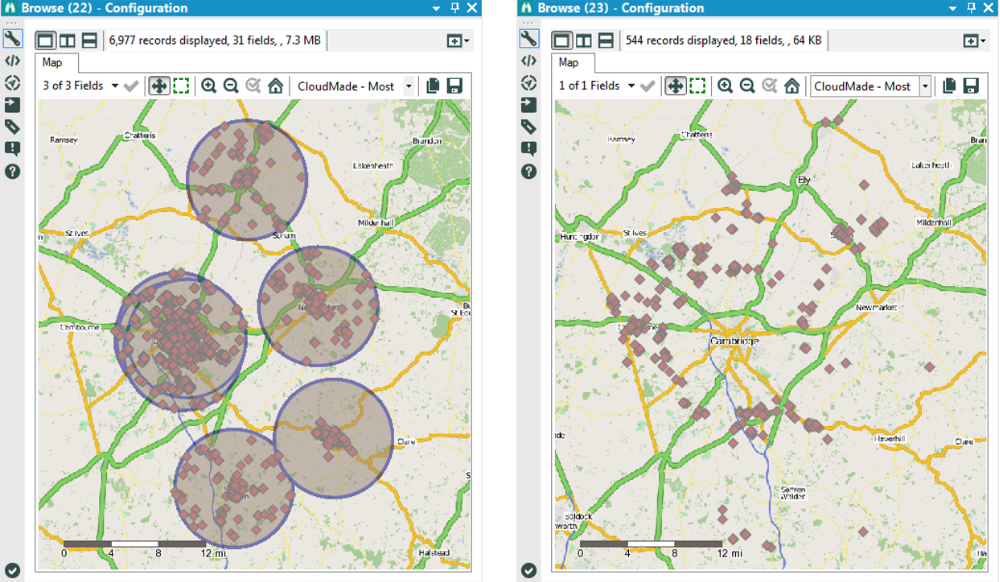 Geospatial analytics capabilities of Alteryx - source
Geospatial analytics capabilities of Alteryx - source
For example, data formats such as GeoJSON, KML, and shapefiles can be easily imported into Alteryx to create maps or perform spatial analysis.
Moreover, Alteryx has good integrations with vendors and their spatial reference data, which makes it easier for analysis.
7. User-friendly interface
One of the key advantages of Alteryx is its highly intuitive and user-friendly interface. The platform is designed to be approachable for users who may not have extensive coding knowledge or advanced technical skills. This design philosophy is evident in the tool's simplicity and ease of use.
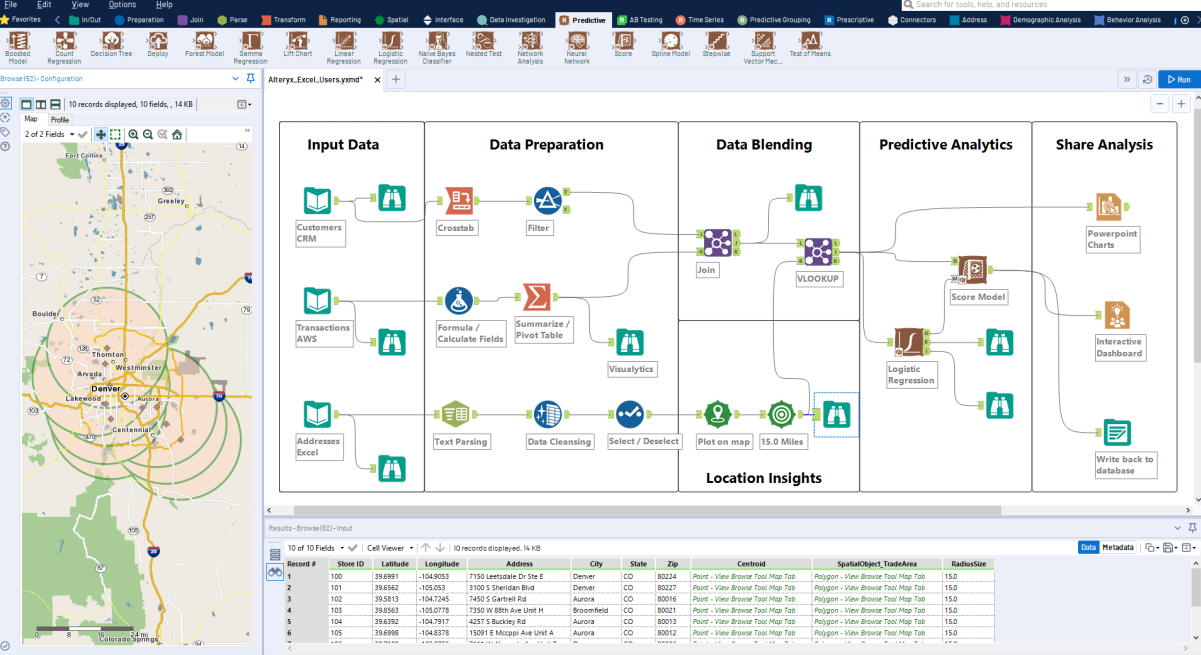
Alteryx Designer interface - source
Furthermore, Alteryx uses a visual workflow, allowing users to see the entire data process from start to finish. This is especially beneficial for non-technical users as it helps them grasp the data processing and analysis journey in a more intuitive way.
Hence, Alteryx's user-friendly interface makes it a preferred choice for a wide range of users, from data enthusiasts to business analysts, who can operate it effectively to meet their data needs.
Benefits of Alteryx
Now that you have a general understanding of what Alteryx is and its core features let's explore the benefits it can offer to businesses.
1. Increased eficiency
The automation capabilities of Alteryx allow for faster and more efficient data workflows. With less time spent on manual tasks like data preparation, users can focus on more important tasks, such as analyzing and making decisions based on the data.
2. Improved data quality
Through its data blending and preparation capabilities, Alteryx helps improve the overall quality of data. By combining data from multiple sources and performing cleaning processes, users can have a more accurate and comprehensive view of their data.
3. Cost savings
By automating workflows and reducing manual tasks, businesses can save on labor costs. Moreover, with more accurate and reliable data available for analysis, organizations can make better decisions that can result in cost savings.
What is Alteryx Used For?
Real-World Scenarios
Alteryx is used mainly as a data preparation and analytics tool in various business scenarios and use cases.
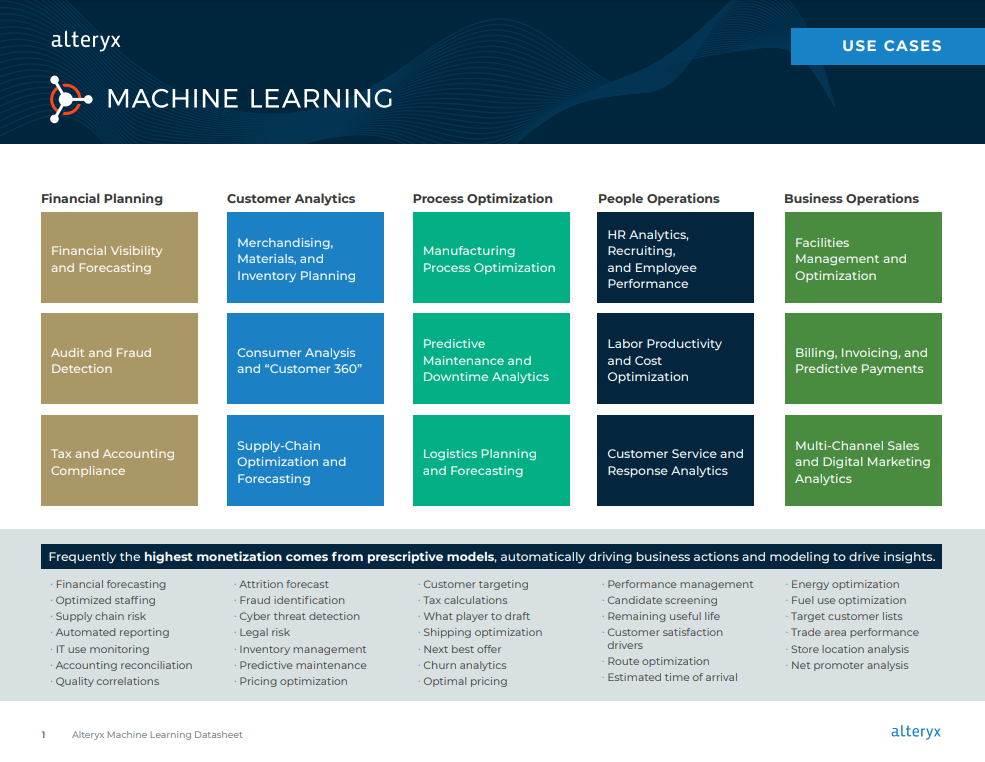
Alteryx machine learning use cases - source
Here are some additional examples:
- Retail: analyzing sales data to improve forecasting and inventory management
- Finance: performing risk analysis and fraud detection
- Healthcare: identifying trends and patterns in patient data for better treatment planning
- Marketing: predicting customer behavior and optimizing marketing strategies
- Customer analytics: supply-chain optimization and forecasting
Who Uses Alteryx?
Alteryx is widely used among professionals in different industries, including:
- Data analysts
- Business analysts
- Data scientists
- Marketing professionals
- Financial analysts
Users can range from those with basic coding knowledge to those with advanced technical skills. The user-friendly interface and drag-and-drop workflow builder make it accessible for users of all levels.
Earn an Alteryx Certification
Wrap Up
Alteryx is a powerful platform that helps organizations make sense of their data, automate workflows, and make data-driven decisions. Its user-friendly interface, advanced features, and ability to handle large datasets make it a valuable tool for various industries and roles.
We have several resources that can help you get to grips with Alteryx, including:
- Introduction to Alteryx course
- Alteryx Fundamentals skill track
- Guide to Alteryx Certification
- Alteryx Tutorial
Looking to deepen your data skills? Check out DataCamp's Data Science for Business for insights into applying data in business contexts, or explore the Introduction to Data Engineering course to learn about the foundations of data management. Both are great resources to complement your knowledge in data analytics and Alteryx.
Alteryx FAQs
How does Alteryx compare to other data analytics tools?
Alteryx stands out for its user-friendliness and the ability to perform complex tasks without coding. It also has a strong focus on automation, making it ideal for businesses looking to streamline their data processes.
Is Alteryx better than Excel?
It depends on the specific needs of your business. Alteryx can handle larger and more complex datasets, automate workflows, and perform predictive modeling, which may not be simple to perform in Excel.
Is Alteryx similar to Tableau?
While both Alteryx and Tableau are data analytics tools, they serve different purposes. Alteryx focuses on data preparation and advanced analytics, while Tableau is primarily used for data visualization.
However, they can work together seamlessly to provide a comprehensive data solution for businesses.
Is Alteryx similar to SQL?
Alteryx is similar to SQL in that both can be used for data cleaning and preparation. SQL is a programming language used for querying and manipulating data in databases, while Alteryx is a visual platform with drag-and-drop tools for data preparation and analysis.
Alteryx can also connect to databases using SQL statements, making it possible to incorporate both tools in data workflows.

I'm Austin, a blogger and tech writer with years of experience both as a data scientist and a data analyst in healthcare. Starting my tech journey with a background in biology, I now help others make the same transition through my tech blog. My passion for technology has led me to my writing contributions to dozens of SaaS companies, inspiring others and sharing my experiences.



